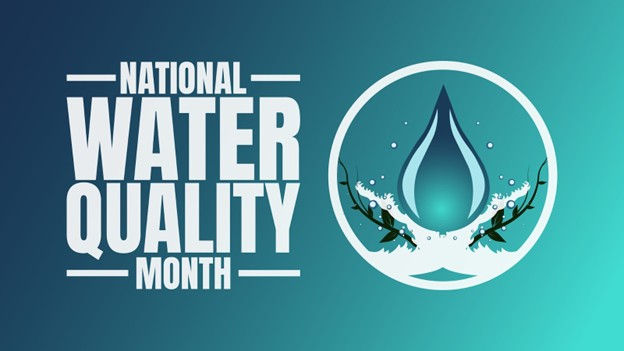Importance of Radon Testing During Home Inspections
- Cosmic Property Inspections
- Jan 23
- 4 min read
Updated: Jul 22

What is Radon?
Radon is a colorless, odorless, and tasteless radioactive gas that occurs naturally from the decay of uranium found in soil, rock, and water. As a naturally occurring gas, radon can infiltrate homes through cracks in floors, walls, and foundations. Prolonged exposure to high levels of radon can cause lung cancer, making it a significant health risk. According to the EPA, radon is responsible for approximately 21,000 lung cancer deaths annually in the U.S.
Why is Radon Testing Important During Home Inspections?
Radon testing is crucial during home inspections because it helps identify the presence of this harmful gas before purchase. Homebuyers should be aware of radon levels to make informed decisions about their future home and the necessary mitigation measures. Testing ensures that any necessary actions to reduce radon levels can be taken before moving in, safeguarding the health of the occupants.
Understanding Radon Risk: Safe Levels, Health Effects, and Reliable Testing Options
Guidance from the U.S. Environmental Protection Agency (EPA) and the Centers for Disease Control and Prevention (CDC) advises taking action when a radon test measures 4 picocuries per liter (pCi/L) or higher, and recommends considering mitigation even when results fall between 2 and 4 pCi/L since no amount of radon is entirely risk-free. Radon is an invisible, odorless gas whose alpha radiation gradually damages lung tissue; lung cancer, the only proven health effect, can take many years of continuous exposure to develop, with smokers facing an even higher risk. Because the gas gives no early warning, tell-tale signs such as a persistent cough, shortness of breath, chest discomfort, coughing up blood, or repeated respiratory infections often appear only after serious harm has occurred.
Here at Cosmic Property Inspections, we can test your home with top-of-the-line continuous monitoring equipment that delivers fast, precise results. Over-the-counter test kits, however, are far less reliable; in our own side-by-side comparison they consistently produced inaccurate readings, so professional testing remains the surest way to know whether your home needs mitigation.
Factors Affecting Radon Test Results
Several factors can impact radon test results positively and negatively:
Positive Influences:
Proper Placement of Test Kits: Placing radon test equiptment in the lowest livable area of the home where they won't be disturbed ensures accurate readings.
Controlled Ventilation: Keeping windows and doors closed during the testing period, except for normal entry and exit, can help obtain accurate results.
Negative Influences:
Improper Placement of Test Kits: Placing test equiptment in high-humidity areas like kitchens or bathrooms can skew results, providing inaccurate readings.
Seasonal Variations: Radon levels can fluctuate with seasons, being typically higher in winter due to closed homes and lower ventilation.
Drafts and Air Currents: Excessive drafts or strong air currents can affect the accuracy of radon measurements.
Best Season for Radon Testing
The best time to test for radon is during the colder months, typically from October to March. During these months, homes are usually sealed from the cold, leading to higher radon levels. Testing in winter provides a more accurate assessment of the worst-case radon exposure scenario.
Testing Despite Mitigation Systems
Even if a home has an existing radon mitigation system, testing is still necessary. Over time, mitigation systems can degrade or become less effective. Regular testing ensures that the system is functioning correctly and that radon levels remain below recommended levels. The EPA recommends testing the air every two years and well water annually. Just because the home has a mitigation system, that does not mean you should bypass testing. If results come back low, you know they system is working as intended and if not, the system can be repaired/repalced.
Radon in Air vs. Well Water
Radon testing can be conducted in both air and well water, as radon can dissolve in water and be released into the air when water is used in the home:
Air Testing: This is the most common method and involves placing test equiptment in the lowest living areas. Results help determine if air quality is safe.
Well Water Testing: This involves collecting a water sample and analyzing it for radon. Radon in water is less common but can contribute to indoor air radon levels, especially during activities like showering.
Radon Remediation Options and Costs
Air Remediation:
Sub-Slab Depressurization (SSD): A system that uses a fan and pipes to draw radon from beneath the home and vent it outside. Costs range from $800 to $2,500.
Sealing Cracks: Sealing cracks and openings in floors and walls helps reduce radon entry. Costs vary based on the extent of repairs needed.
Water Remediation:
Aeration Systems: This method involves mixing water with air and venting the radon out. It costs between $3,000 to $5,000.
Granular Activated Carbon (GAC) Filters: These filters can remove radon from water, and installation costs range from $1,000 to $2,000.
National Radon Action Month
January is National Radon Action Month, dedicated to raising awareness about radon risks and encouraging homeowners to test their homes. It is an excellent time to test for radon and learn more about mitigation options.
Professional Testing vs. Charcoal Test Kits
Professional radon testing is highly recommended due to the use of accurate and calibrated continuous radon monitors (CRMs). These monitors provide real-time data, and their annual recalibration ensures reliability. In contrast, charcoal test kits are less precise and can be affected by humidity, other environmental factors and DIY testing.
Additional Resources
For more detailed information on radon, visit the Environmental Protection Agency (EPA) website at https://www.epa.gov/radon.
Radon testing is a vital step in home inspections. It ensures the safety and health of occupants by identifying and mitigating potential radon risks. Regular testing, even with mitigation systems in place, and professional testing methods, provide the most reliable results. By understanding the importance of radon testing, homebuyers can make informed decisions and maintain a safe living environment.



